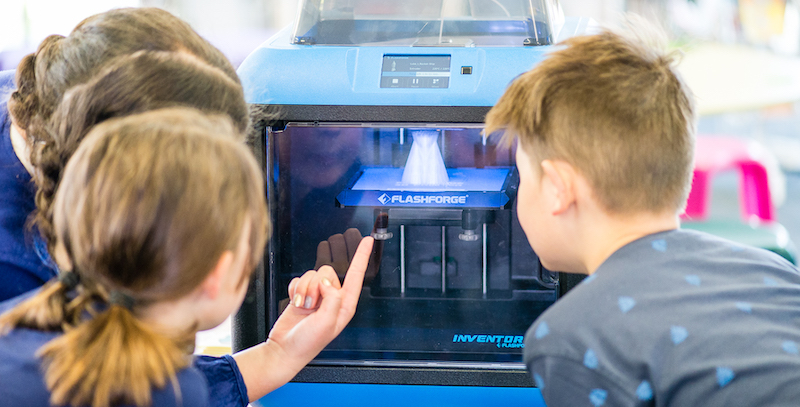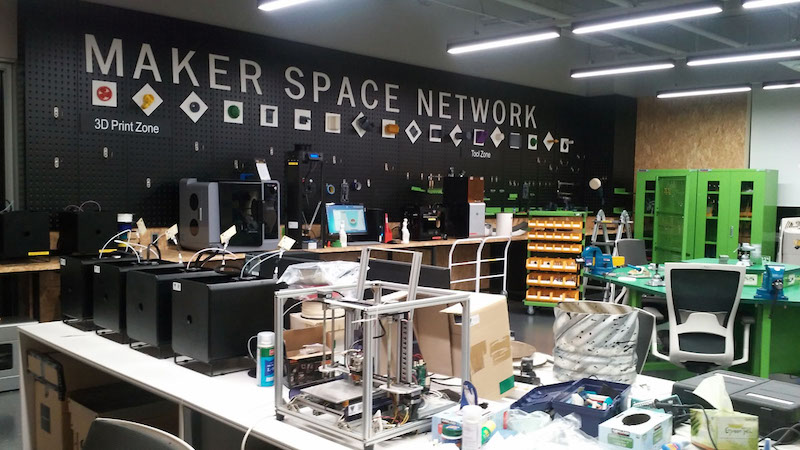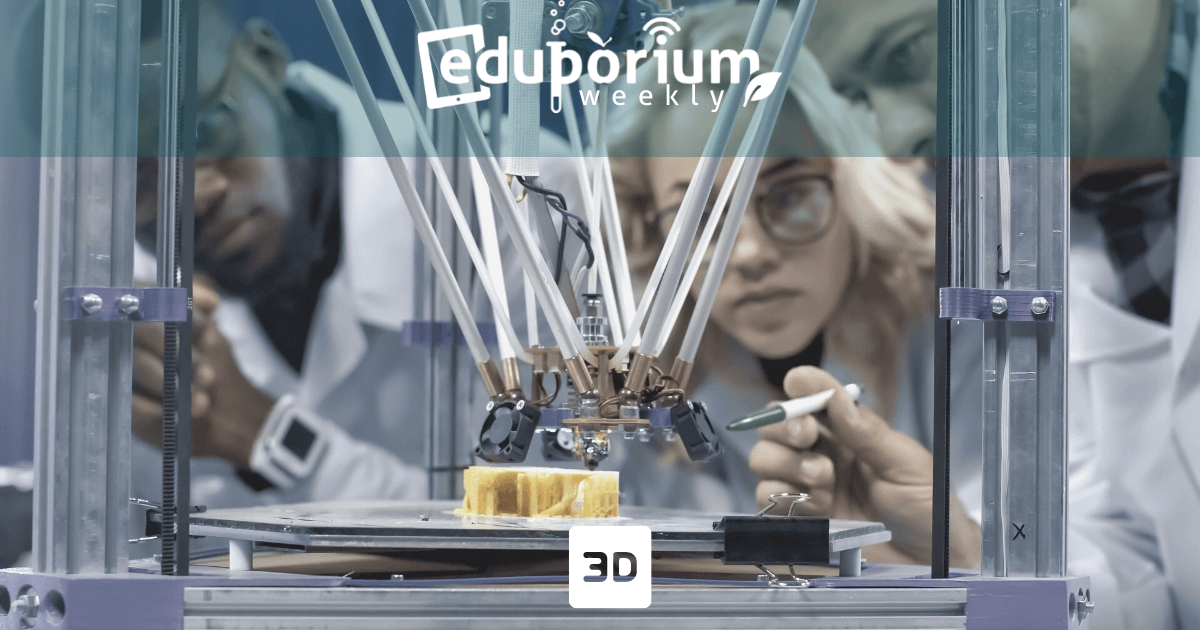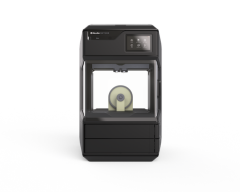For students, 3D printing can be one of the most memorable experiences they’ll have in school. There’s something truly exciting and rewarding about discovering something that needs fixing or improving, finding the design for creating it, uploading the specs, and watching as the part or piece is brought to life in three dimensions. Today, 3D printing has all sorts of positive implications in many different industries, including medical, science, engineering, military, and more. It’s with these innovative machines that anybody can create precisely crafted objects for filling specific needs. By using 3D printing to solve challenges, students can prepare for the future and learn key skills in the process. And, it's not that complicated to introduce 3D printing in a school setting.
3D Printing in Schools
Some people’s first inclination of 3D printing in education is to question how it helps students develop. And, the first answer they’ll likely get is that it helps students turn conceptual ideas into physical renderings. While there's nothing wrong with this interpretation of the value of 3D printing in education, there's more to it. When given the chance to try 3D printing, students generally become more excited and engaged than they typically are with 2D learning and textbooks. There are also some other factors that school leaders need to think about, however, including cost. Though 3D printers are still becoming more affordable and the cheaper models are still becoming more reliable, if students aren't using them regularly, you might need a way to inspire them. You certainly won’t want a purchased 3D printer to just be sitting around.
The value that 3D printing helps add to education comes in both educational and functional benefits. This is true particularly within the STEAM subjects and for students who enjoy learning by doing. For teachers, 3D printing is valuable because, in many cases, it creates more freedom to design their own lessons and to observe the results, including engagement levels and how well students are learning certain skills. Also, 3D printers, like the MakerBot METHOD or LulzBot Mini, are fairly affordable and accessible for all types of students. When kids use 3D printers, they better understand technologies that might be much more prominent as they begin their career. This technical understanding also often leaves them more prepared as they move towards their futures.
The great thing about 3D printing is that it fits in just about any subject—even those that aren’t necessarily STEM-related. Here are some examples of how to potentially incorporate them. In a biology class, students can print replicas of different animals and place them in their corresponding ecosystems. In a math class, students can print a stable device for rolling projectiles to measure their velocity and acceleration. As for a media class, students can print props to be the focal points or background visuals in videos. Finally, in English learning classes, students can print objects for use in various ways and then spend some time journaling about the printing journey and how they overcame challenges. It’s not just the STEM subjects when it comes to 3D printing and, the more educators who realize this, the more widely accepted 3D printing will hopefully become.
Building Creative Skills with 3D Printing
In today's classrooms, teacher's tasks center largely on helping students develop skills they believe are most important for future careers. While it’s true that these skills might be totally different in five or 10 years, educators are using what they know now to facilitate the most relevant learning experiences. To help their students build these vital skills, teachers must first engage them—something that 3D printing is proven to help with. Next, they need them thinking critically and collaborating—two more things that are essentially a byproduct of 3D printing. In the future, success will hinge largely on creativity and 3D printing is a great way to inspire students. It can help solidify their creativity, critical thinking, and design thinking skills year in and year out.
Part of why 3D printing helps students become more creative is because they're free to create in almost any way. Traditional pen-and-paper learning often thwarts that creativity and compels students to simply remember information and spit it back, resulting in missed opportunities to develop true skills for the future. Through 3D printing—to name one example of active learning—students can develop creativity, problem solving, critical thinking, inquiry, design thinking, collaboration, autonomy, literacy, tech, and communication skills among others. And, those are the skills that will help them excel in a complex future world. They can also learn about the ease of filament extrusion, which is important in selecting 3D printers for students. It works hand-in-hand with the 3D Printing process and can help simplify things in a lot of cases. For children, it's a great way of teaching them about recycling (collecting plastic waste, creating filament, and then 3D Printing it into a useable object or tool).
Many teachers who have used 3D printing with students have reported significant improvements in many key areas. The biggest thing is the near 100 percent student engagement rate, which is incredibly encouraging. Other positive outcomes of using 3D printing include significant increases in teacher confidence with teaching in makerspaces, increases in teacher confidence with teaching with technology, and increases in teacher enthusiasm levels. Mix these with the benefits of 3D printing for students and you’ve got a pretty ideal situation. On top of that, students can see their teachers as lifelong learners—something they can hopefully carry with them.

Using Makerspaces to Bring 3D Printing into Education
If you’re like us, you know that makerspaces serve students in a whole bunch of ways. They allow for more creative freedom and give educators the opportunity to weave some more hands-on opportunities into learning. Some of the most common tools in school or library makerspaces are 3D printers. Countless educators have been able to capture this excitement and use it to get students more engaged with their education. Even though there are fewer rules and restrictions in makerspaces, students can still develop STEM skills with 3D printing. As we mentioned before, those include creative and critical thinking, design thinking, collaboration, and innovative problem solving. And, the added bonus of being in a makerspace can also help accelerate development in these key areas.
Educators can bring 3D printing experiences into makerspace environments in any number of ways, but the best approaches tend to allow students to also work on development in some key areas. The first of those is how they think. Although 3D printing might be new to students, educators should keep the desired outcomes of their MakerEd initiatives in mind. Makerspace learning should be engaging and thought provoking, which ties in beautifully with the opportunities 3D printing provides. It also helps students work on design thinking and how they go about creating solutions to problems. With 3D printing, design skills development often involves students using various software programs to create all kinds of objects. They also enlighten them to different design solutions as they build increased spatial and visual awareness.
More specifically, 3D printing can help all students bolster their problem solving, prototyping, and collaboration skills. Access to a 3D printer can provide students with more options when looking to design a creative solution. And, as they progress through multiple attempts, they can get an idea of what it’s like to work on prototyping by making note of the positive aspects of one failed solution as well as the negative ones. Finally, 3D printing is one of the best ways for students to work on their collaboration skills. It's great for getting them to work together and combine their thoughts while uniting to create something useful. All this and more is possible with the purposeful integration of 3D printing in school makerspaces.
3D Printing in the Classroom
These days, 3D printers are compact and versatile enough for students to use them in a lot of different places. Some of the most common locations for 3D printing are the library and a makerspace (if the school has one). Due to increased functionality and portability, however, like with 3Doodler's 3D printing pens, many educators are finding homes for them right in their classroom. It might take some rearranging but, if you only have one or two 3D printers, it shouldn’t be too painful. Having 3D printers right in the classroom allows students to potentially expedite the creation process. If they come up with an idea for a print during a lesson or a discussion, it could definitely be beneficial for them to be able to start designing it and printing it right away. This enables them to act on their inspiration while their ideas are fresh.
If you’re using 3D printing right in the classroom, chances are you're tying the printing directly to curricular topics, which is totally fine. These days, 3D printing isn’t reserved just for STEM classes—it can be part of just about any school subject. In a history class, for example, students could print replicas of ancient tools or objects. In a science class, they could print parts for a car and then measure its acceleration and velocity. These are, of course, just two examples and the possibilities for using 3D printing in the classroom are much greater. The one thing you should keep in mind, however, is that 3D printers generally make noise (nothing too loud). It's sometimes best to start print jobs towards the end of the school day so students aren’t distracted by the sounds and by watching the progress of their prints.
When 3D printing is integrated in the school day, students gain more than simply adding extensions to topics they’re learning in class. They learn other skills while they 3D print, including design thinking, engineering design, critiquing, and collaboration. They can also learn to gain empathy for others, which often helps drive them to develop more creative solutions. Also, 3D printing is a great way for teachers to illustrate the problem-solving process. It allows students to work through a problem, determine the biggest needs, and generate a well-thought solution to address weaknesses. This type of approach to problem solving is valuable for students across all grade levels. And, as educators, you should want your students to employ the type of perseverance that 3D printing projects promote throughout all of their educational endeavors.

It’s Not as Scary as you Think
Some of the main reasons that teachers are reluctant to try 3D printing with their students are that they think it might be too costly, that the machines might be too complicated, and that the printers might soon break down and render their investment useless. On the other hand, 3D printing helps students and teachers see that there's a creative solution to almost every issue. Even if they do have a setback with the printer itself, that's a great opportunity for troubleshooting and problem solving. Fortunately, however, most of the critical thinking will take place when students are assessing a situation and determining the size, shape, and functionality of the prints they need to create.
Most of the prints students construct are fairly small in size. Some even fit in their hand while others are small enough to sit on table tops. Generally, the smaller the build, the fewer chances there are for complications, which is a good thing. There are tons of stories about students using various parts to build things like robots, convenient medical tools, and a whole lot more. Some even become famous, like one student who leveraged 3D printing with a Raspberry Pi. That student wanted to be sure the Pi wouldn't get damaged while a robot moved around, so he came up with the idea of measuring out the exact requirements and designing a case. In just a few hours, he had a protective case printed and essentially killed two birds with one stone. He protected his Pi and learned more about 3D printing in the process.
That same student originally downloaded an online file of the case he wanted to print but, when he arrived at the makerspace, they encouraged him to design the part himself. Using 3D printing software, he ended up essentially jumping into the deep end and went from having very little experience with 3D design to creating the exact part he needed from scratch. What we’re trying to get at is that there is no reason to fear something new just because it’s new. Nowadays, 3D printing is a powerful and convenient method for creating solutions that fit specific requirements. And, it doesn’t require a whole lot of experience to get started. To explore the 3D printers and filament packages we have, including Flashforge, Dremel, and others, visit our store!
For the latest EdTech, STEM, and 21st century education news, follow us on Twitter and Instagram. Like us on Facebook, too, or sign up for our newsletter for our latest product announcements and offerings. If you have an idea for an Eduporium Weekly theme, send us a message on social media or comment below.






We work with educators, manufacturers, and other experts throughout the US and have been fortunate to receive great feedback and helpful suggestions to pass on!
it.
There's a lot of folks that I think would really appreciate your content.
Please let me know. Many thanks